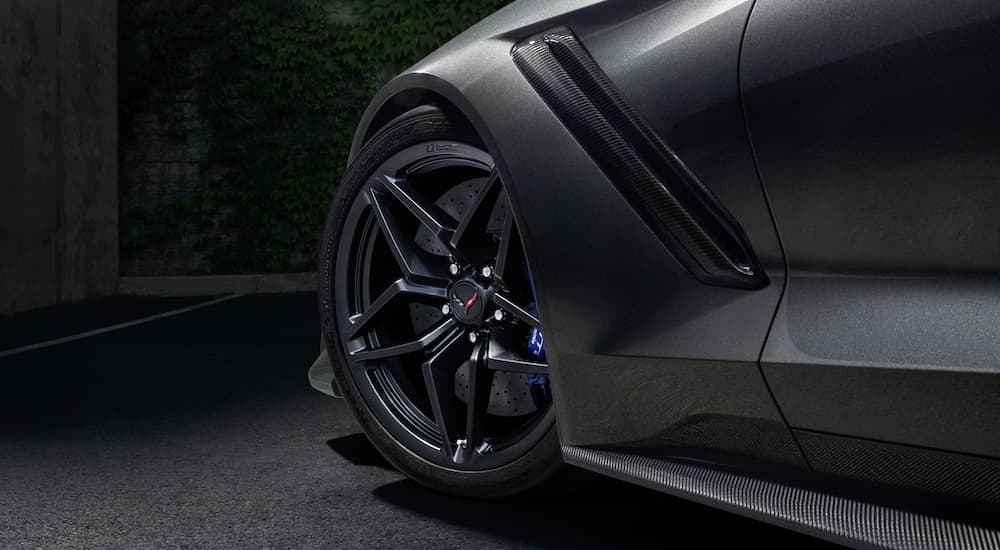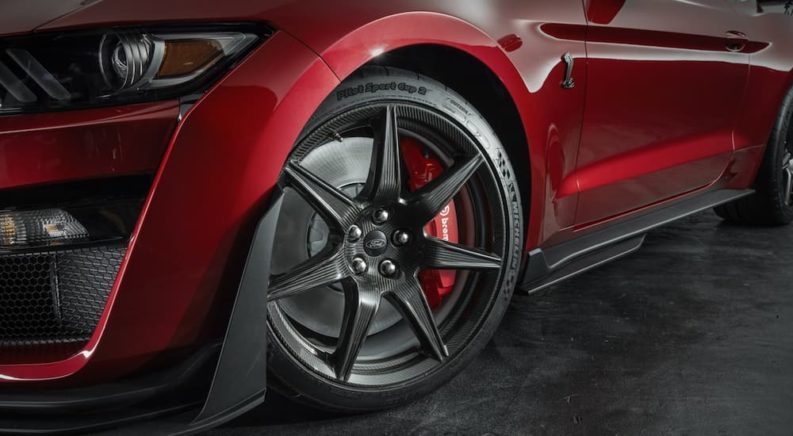If you’ve owned a car or two in your lifetime, chances are you’ve been to a tire shop to get some kind of maintenance done, whether it’s been a tire rotation, balancing tires, or getting new tires installed. Tires are one of the most important parts of any vehicle as they’re what’s connecting your car to the road and making sure you’re able to get from point A to point B in a safe and comfortable manner. Every time you drive your vehicle, your tires are in constant contact with the ground, from pavement to dirt trails, and you and your passengers are able to feel the roads and trails somewhat as you’re driving. The type of tires you have on your vehicle may affect your ride a lot more than you might think.
In this article, we want to show you how having different types of tires on your vehicle will give you different types of traction, handling, and performance. Specifically, we want to clear up some misconceptions about high-performance tires and help you to better understand what vehicles should have these tires and what kinds of drivers would most benefit from them. And just a heads up, there are even different types of high-performance tires out there, so you can’t just group them all together and expect them to deliver similar results.

The Types of Tires
If you didn’t know, the tire industry is large and filled with variety. You can find tires in all sizes, not necessarily different shapes, to fit all kinds of vehicles. There are all-season tires, touring tires, SUV tires, as well as truck, summer, all-terrain, track, highway, winter, trailer, and performance tires, among many others. All of these tires will come with different ratings, indicated on the tire itself, to let you know what they’ve been designed for.
For example, an all-season tire might come with an S or T-speed rating, which means the tire is rated for a maximum speed of either 112 mph or 118 mph, respectively. This type of speed rating is very common as it’s well above posted and legal speed limits throughout the United States, so it gives drivers plenty of cushion to reach the maximum legal limits in their areas, which will never actually climb higher than 85 mph anywhere in the country.
All-season tires will be some of the most commonly seen tires because they’re quite decent in most situations. They will last over thousands of miles, and, as the name implies, they’ll be grippy enough throughout every season of the year. The names of each type of tire are pretty straightforward for the most part, so it’s not too difficult to guess what a tire might be designed for.
Take summer tires and winter tires, for instance. A summer tire may be an excellent choice for improved handling and braking in dry environments, but as you move into more snowy situations, their levels of traction start to decrease. And that’s where the winter tires will then start to excel. So if you live somewhere that doesn’t experience much of one particular season, you may be able to get by with either winter or summer tires. Or, you can always switch them on when the specific season is in full swing. Otherwise, all-season tires would be a great choice.
Where Do Performance Tires Fit?
Performance tires are often seen as the tires for people that want to go fast. The real need-for-speed people out there that want to actually feel every curve and bend in the roads they’re driving on. In some ways, that is what these tires are for, and in many ways, it’s not.
In general, a performance tire will have a higher speed rating than your average tire. You can find varying speed ratings across the different types of performance tires, but they’ll generally range from H (130 mph), V (149 mph), W (168 mph), Y (186 mph), and even Z (above 149 mph). The Z-speed rating is a little different from the others because it doesn’t have a maximum number for its mph-rating, but rather it just states that tires with the Z-rating are rated for speeds in excess of 149 mph.
So there’s the speed component of high-performance tires, but that obviously doesn’t mean that everyone with high-performance tires is going to be driving around on the streets at these maximum speed ratings. High-performance tires are typically categorized as a type of summer tire, which means they aren’t really meant for driving in frozen, slick, or snowy conditions. They’re designed to provide more grip and handling at higher speeds, and that will normally correlate with a more exciting ride for many sports car enthusiasts. In fact, you can quite often find these types of high-performance summer tires equipped on new sports cars and other similar vehicles that would benefit from higher speed ratings and improved grip.
While summer tires are fairly common in the automotive industry, they become more uncommon as you ratchet up the performance levels. High-performance tires are one thing, but getting into ultra high performance, max performance, and extreme performance tires is a bit different. Many of these types of tires aren’t meant for normal driving conditions or normal cars, for that matter. You may find your supercars and other high-end cars equipped with these tires because they’re not often used for normal commuting and daily errands. Instead, they’ll be down at an actual race track where you can push the limits of the speed ratings attached to the tires.

Are They for Me?
Basically, if you want tires that can give you better responsiveness and traction in wet and dry conditions, then high-performance tires might be the right choice for you. They’ll most often be paired with sports cars and other similar vehicles, so it might not make too much sense to attach them to anything that doesn’t have a bit of get up behind it. Keep in mind that the type of tires you choose for your vehicle will definitely affect the way the ride is going to feel, how often you’ll need to replace your tires, and possibly even your gas mileage. A more enjoyable driving experience may come with a little more cost.
While it’s not illegal to love the feel of driving a fast car with high-performance tires attached to it, it is illegal to drive above posted speed limits. Just because a tire might have a higher speed rating, doesn’t mean you should actually be attempting to reach that maximum speed rating when you’re out on public roads and not in a controlled environment like a racing track. Also, you should always make sure that all of your tires have the same speed rating and meet the recommendations offered by your vehicle’s manufacturer. The most important thing is to make sure you’re safe at all times, and that other drivers and passengers are also safe while you’re out driving on roads. For more information regarding different types of tires, whether they’re all-season, performance, or whatever they may be, feel free to contact your local tire shop and figure out what tires might be the best fit for you and your vehicle.

